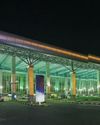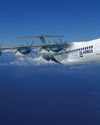
India's international air traffic has experienced considerable growth over the past few decades, reflecting the country's increasing economic power, rising middle class, and global connectivity aspirations. The sector's expansion is a reflection of not only advancements on the domestic front but also its integration into the global economy. Historically, India's international air traffic was relatively modest, largely dominated by state-owned carriers like Air India. However, the liberalisation of the Indian economy in the early 1990s marked a turning point. Economic reforms paved the way for private carriers and foreign airlines to enter the market, significantly boosting competition and quality of service. This shift was crucial in making air travel more accessible and affordable for a larger segment of the population.
The Indian international air traffic market is served by a mix of domestic and international airlines. Domestic carriers like Air India, IndiGo, and SpiceJet have expanded their international routes, while international airlines such as Emirates, Qatar Airways, and Singapore Airlines have increased their frequency and destinations to and from India. The entry of lowcost carriers has also played a significant role in making international travel more affordable.
Over the last few years, domestic market leader IndiGo has made silent strides in international air travel. The airline deploys more seats than Air India, carries more passengers than Air India but with the consolidation of Tata group airlines from four to two, the balance seemed set to shift in favour of Air India. This changed with the order for 30 A350s by IndiGo this summer, altering the dynamics of the country's global aviation market.
Understanding capacity-by Seats and Available Seat Kilometres
This story is from the August 2024 edition of Cruising Heights.
Start your 7-day Magzter GOLD free trial to access thousands of curated premium stories, and 9,000+ magazines and newspapers.
Already a subscriber ? Sign In
This story is from the August 2024 edition of Cruising Heights.
Start your 7-day Magzter GOLD free trial to access thousands of curated premium stories, and 9,000+ magazines and newspapers.
Already a subscriber? Sign In

VIDARBHA INDIA'S NEXT AVIATION HUB?
With the modernisation process for Nagpur Airport moving ahead in full steam, Vidarbha, a long-overlooked region in Maharashtra, is gaining momentum as a potential aviation hub with significant infrastructure projects like Air India's aviation academy in Amravati and the ISHAN air traffic management scheme. But what will really give a film to the region is the development of Nagpur airport by the GMR Group, the creation of a second runway and a spanking new terminal.

BUSINESS AVIATION INDIA'S MISSED OPPORTUNITY?
India's Missed Opportunity?

INDIGO'S WET LEASE GAMBLEAN OPPORTUNITY OR A COST RISK?
IndiGo’s reliance on wet-leased aircraft, including six MAX 8 jets, highlights its efforts to tackle grounded planes and expand capacity. While offering flexibility, this approach poses cost and operational challenges, writes AMEYA JOSHI.

LAST-MILE DELIVERY, AI GOES THE DISTANCE
Artificial Intelligence is revolutionising air cargo and last-mile delivery by optimising logistics, reducing costs, and enhancing efficiency. Despite challenges, Al-driven solutions promise transformative growth for the cargo industry, writes R CHANDRAKANTH

TAMIL NADU'S REGIONAL AVIATION SURGE
Tamil Nadu is set for an aviation boom, with upgrades to key regional airports and plans for new facilities like the Hosur and Parandur airports. These developments aim to enhance connectivity, boost economic growth, and attract trade and tourism across the state, writes RASHEED KAPPAN

POTENTIAL OF ARTIFICIAL INTELLIGENCE IN AIR TRAFFIC MANAGEMENT
Artificial Intelligence promises to transform Air Traffic Management (ATM), improving efficiency, safety, and decision-making. Despite its potential, challenges like regulatory complexities and integration barriers must be addressed, writes DR. S K SARASWATI

INSIGHTFUL MRO
Predictive maintenance is a clear digital priority for MROs. This transformative approach enhances efficiency, reduces costs, and minimises downtime, addressing evolving challenges in fleet management, writes ATUL CHANDRA

INDIAN AVIATION'S 2025 TAKEOFF
India's aviation sector soared to record-breaking domestic passenger traffic in 2024, highlighting robust growth despite challenges like supply chain disruptions and infrastructure constraints. As 2025 unfolds, transformative fleet expansions, new airports, and regional connectivity initiatives promise unprecedented growth, but questions about profitability and execution remain, analyses AMEYA JOSHI

HIGH ON HYDROGEN
Hydrogen fuel presents a transformative opportunity for sus-tainable aviation, offering zero-emission potential. With industry giants like Airbus and Embraer leading advancements, its deployment remains a decade away, observes ATUL CHANDRA

UNTAPPED POTENTIAL OF BUSINESS JETS IN AN ENCOURAGING MARKET
India's business jet market is witnessing growth, fueled by rising UHNWIS and increasing private jet demand. Yet, challenges like high operational costs, inadequate infrastructure, and unclear fractional ownership policies hinder its full potential, explains R. CHANDRAKANTH